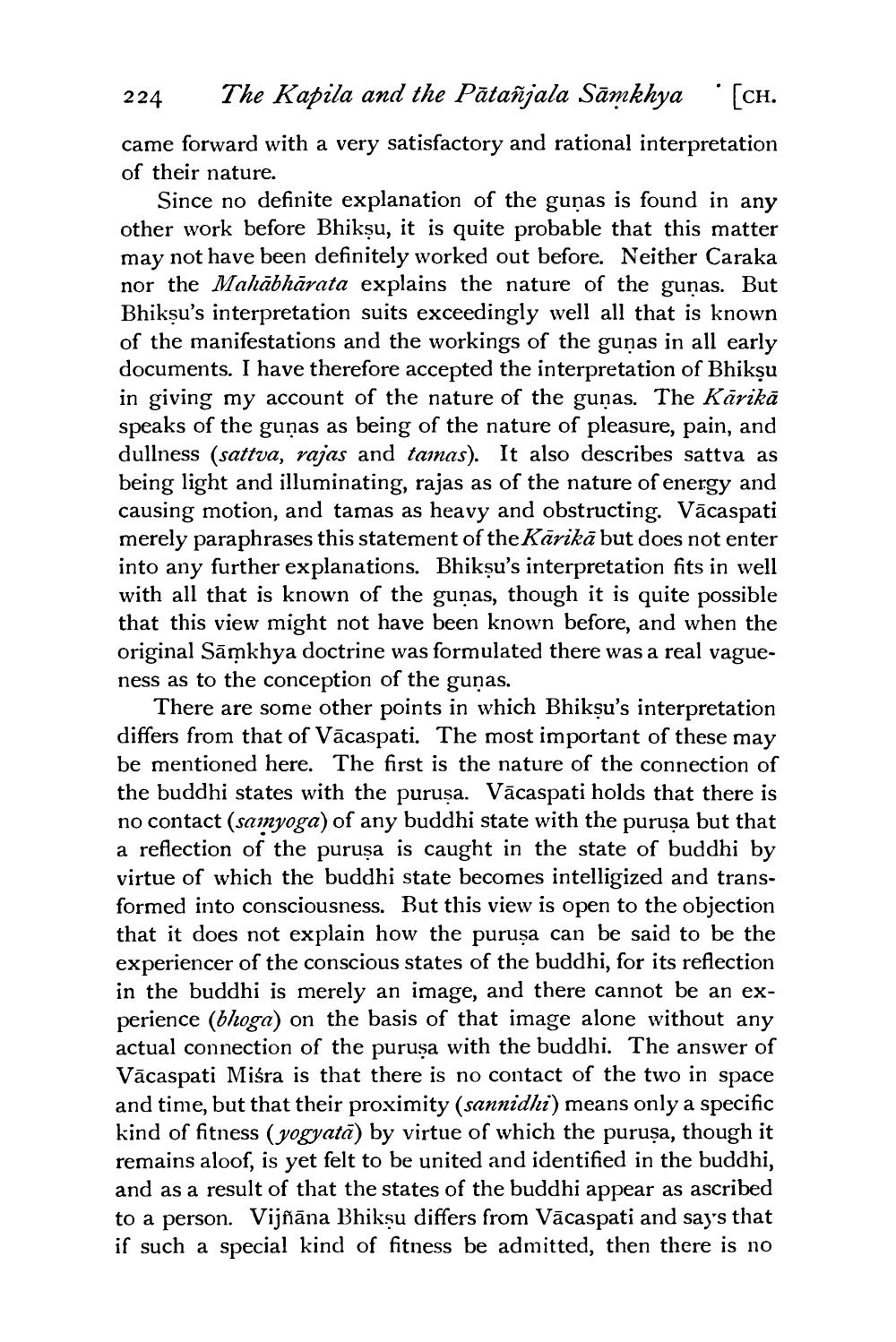________________
224
The Kapila and the Pātañjala Sāmkhya
[CH.
came forward with a very satisfactory and rational interpretation of their nature.
Since no definite explanation of the gunas is found in any other work before Bhikṣu, it is quite probable that this matter may not have been definitely worked out before. Neither Caraka nor the Mahābhārata explains the nature of the guņas. But Bhiksu's interpretation suits exceedingly well all that is known of the manifestations and the workings of the guņas in all early documents. I have therefore accepted the interpretation of Bhikṣu in giving my account of the nature of the guņas. The Kārikā speaks of the guņas as being of the nature of pleasure, pain, and dullness (sattva, rajas and tamas). It also describes sattva as being light and illuminating, rajas as of the nature of energy and causing motion, and tamas as heavy and obstructing. Vācaspati merely paraphrases this statement of the Kārikā but does not enter into any further explanations. Bhikṣu's interpretation fits in well with all that is known of the guņas, though it is quite possible that this view might not have been known before, and when the original Sāmkhya doctrine was formulated there was a real vagueness as to the conception of the gunas.
There are some other points in which Bhiksu's interpretation differs from that of Vācaspati. The most important of these may be mentioned here. The first is the nature of the connection of the buddhi states with the purusa. Vācaspati holds that there is no contact (samyoga) of any buddhi state with the purusa but that a reflection of the purusa is caught in the state of buddhi by virtue of which the buddhi state becomes intelligized and transformed into consciousness. But this view is open to the objection that it does not explain how the purusa can be said to be the experiencer of the conscious states of the buddhi, for its reflection in the buddhi is merely an image, and there cannot be an experience (bhoga) on the basis of that image alone without any actual connection of the purusa with the buddhi. The answer of Vācaspati Miśra is that there is no contact of the two in space and time, but that their proximity (sannidhi) means only a specific kind of fitness (yogyatā) by virtue of which the puruṣa, though it remains aloof, is yet felt to be united and identified in the buddhi, and as a result of that the states of the buddhi appear as ascribed to a person. Vijñāna Bhikṣu differs from Vācaspati and says that if such a special kind of fitness be admitted, then there is no




